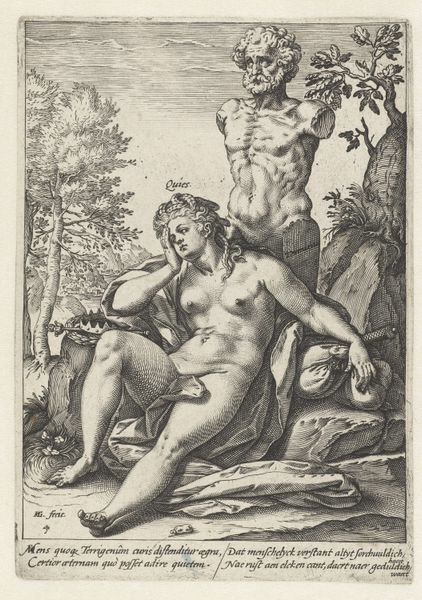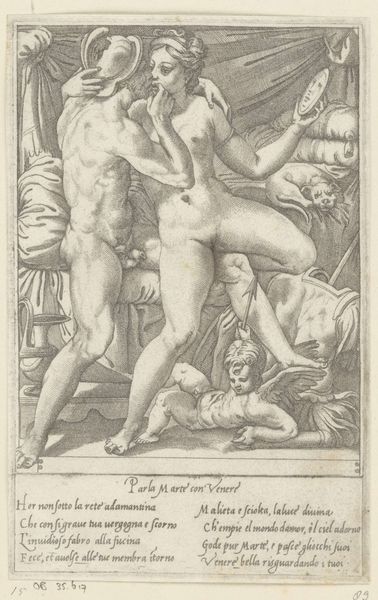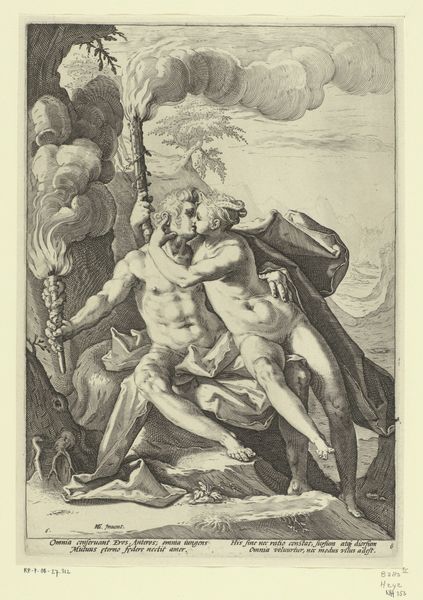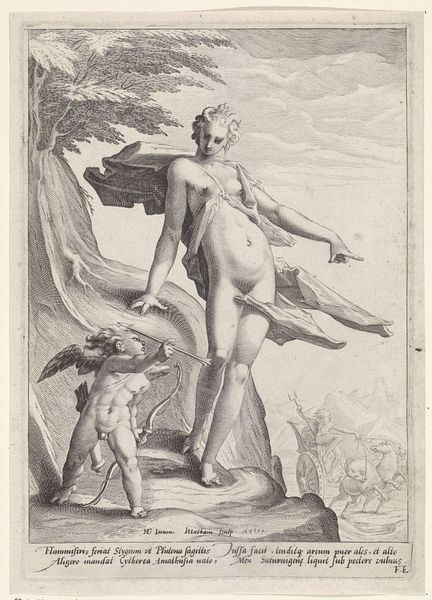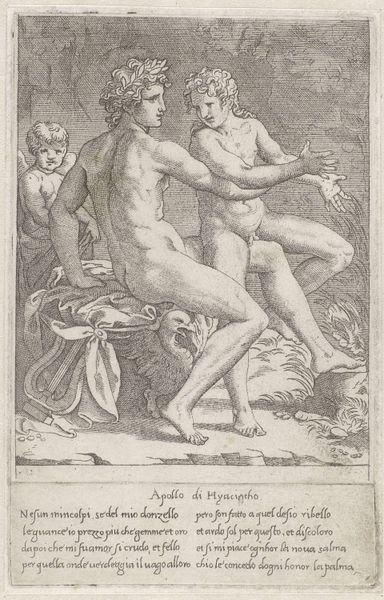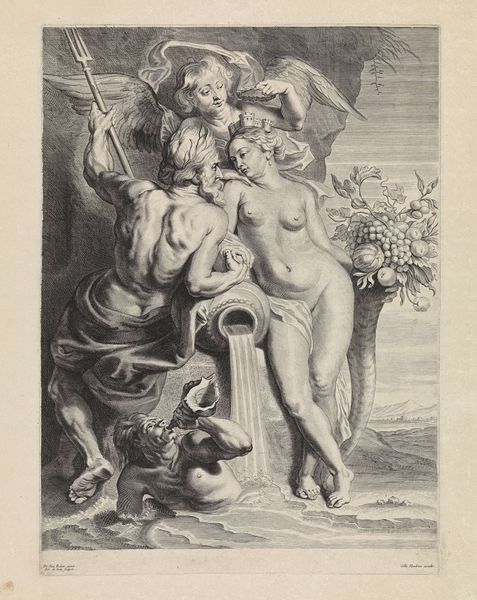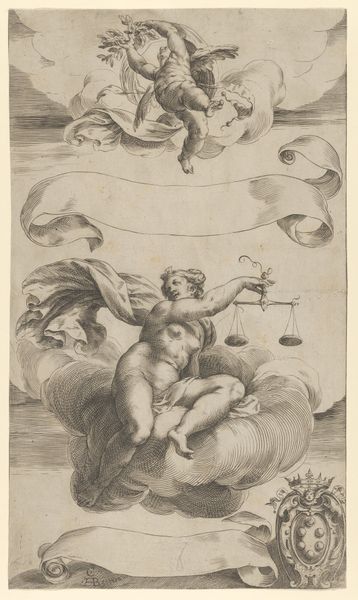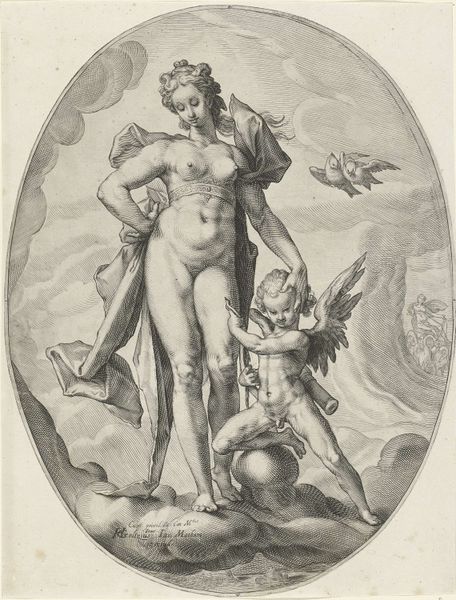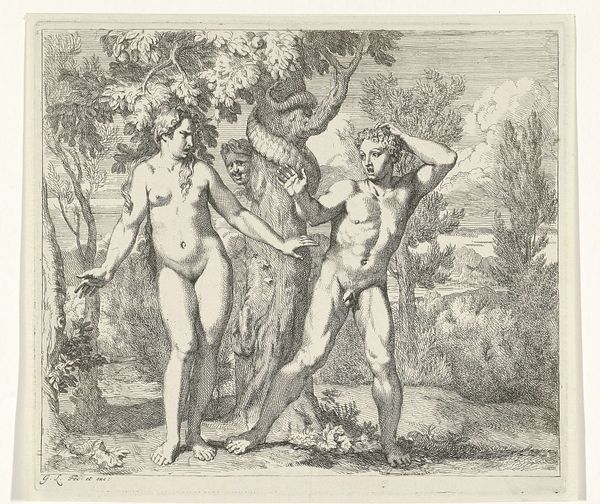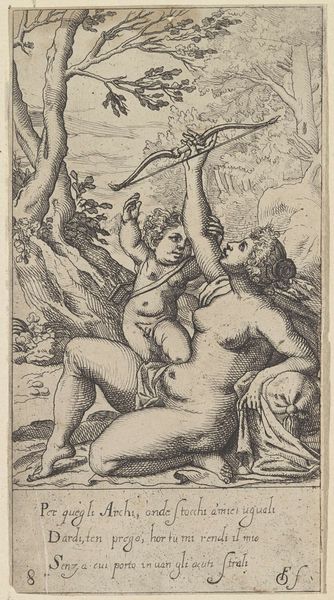
engraving
#
allegory
#
old engraving style
#
mannerism
#
history-painting
#
nude
#
engraving
Dimensions: height 215 mm, width 159 mm
Copyright: Rijks Museum: Open Domain
Curator: Here we have Hendrick Goltzius's "Neptunus en Caenis," an engraving dating from somewhere between 1586 and 1590. Editor: My first impression is of swirling tension. It feels almost theatrical, with these exaggerated poses rendered in such precise detail. Curator: Absolutely. Goltzius was a master of Mannerism, and you can see it in the almost serpentine twisting of the figures and their stylized musculature. Note how the composition uses the lines of their bodies, the dolphins, and even the waves to direct our eyes around the image. Editor: But look closer. This isn't just about aesthetic virtuosity. It's about power dynamics. We see Neptune, god of the sea, quite literally stepping on a dolphin as he seizes Caenis. Her body language—the arched back, the averted gaze—it speaks to a loss of control, a forced transformation. Curator: It’s definitely evocative. But in focusing on those representational elements, we risk missing the artistry in how Goltzius translates texture and depth through the precise use of hatching and cross-hatching. Look at the tonal variations he achieves, solely through the density and direction of those lines. Editor: Yes, but that skill serves a story—Ovid's tale of Caenis, who, after being raped by Neptune, is granted her wish to become an invulnerable man, Caeneus. So, in a sense, Goltzius is capturing a moment of violation, but also the potential for empowerment, albeit through a violent act. It’s a deeply troubling transformation. Curator: A transformation that's entirely conveyed through form. He sculpts these figures from ink; the drama resides in their interplay as shapes. The dynamism created suggests a state of transience. Editor: But the ripples of that transience extend into the societal context, prompting us to confront themes of gender, violence, and the negotiation of power within a mythological framework. That the work still manages to agitate says a great deal about its lasting relevance. Curator: A provocative reading that adds yet another layer to appreciate about this exceptional Mannerist engraving. Editor: I agree. Thanks to both form and context we can see that this piece maintains the potential to elicit an intellectual debate today.
Comments
No comments
Be the first to comment and join the conversation on the ultimate creative platform.


